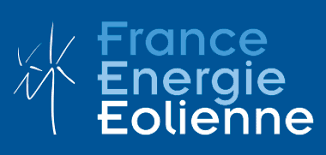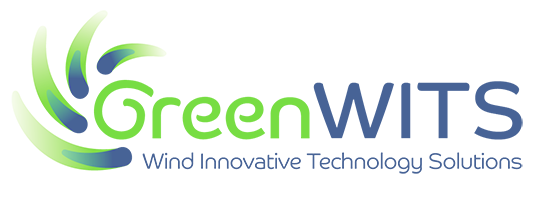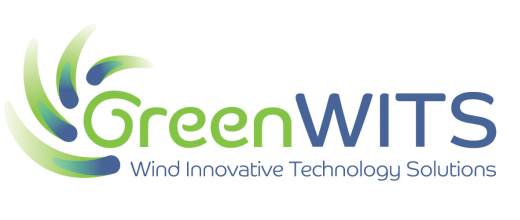15.06.2023
5 minutes of reading
GreenWits, the new IFPEN subsidiary dedicated to wind energy, offers advanced digital services to the sector’s developers and operators. The start-up only came about as a result of the relevance of the solutions devised and developed by IFPEN’s researchers. Reminder.
Globally, the cumulative power of commissioned wind turbines is in excess of 840 GW, representing more than 7% of the world’s electricity consumption. The sector has enjoyed sustained growth since 2014, while costs have continued to fall.
The growth of the offshore wind sector is particularly strong. Europe, including the United Kingdom, is targeting a wind energy production capacity of at least 65 GW in 2030 and 300 GW in 2050, compared to 30 GW currently, which would ultimately represent 25% of total electricity production.
France, the country in Europe with the second highest capacity behind the UK, presents a theoretical technical potential of 80 GW for fixed installations, and 140 GW for floating installations. The ambition is to achieve a commissioned capacity of 18 GW by 2035 and 40 GW in 2050.
> Find out more : see our Explainer dedicated to wind energy
It is against this background that IFPEN has been developing technologies for more than 10 years and its products and services are attracting the interest of increasing numbers of industrial players. In order to be even more in step with demand, a company dedicated to wind energy has been created. GreenWits opened for business in May 2023.
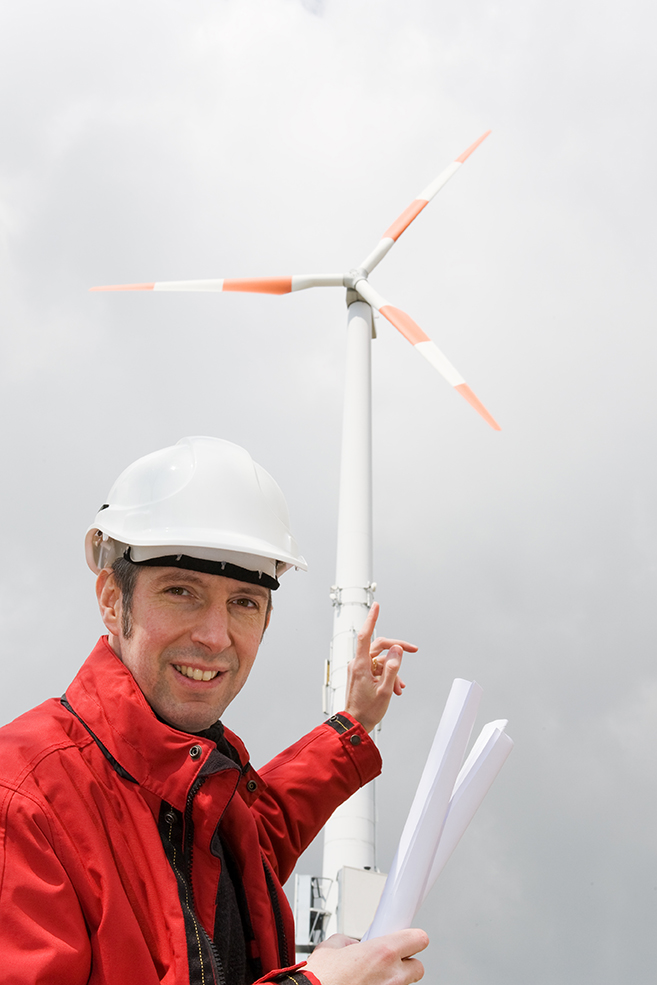
Established expertise in the field: a brief recap
Research dedicated to wind energy began at IFPEN in 2010, initially focusing on floating wind power (DeepLines Wind™ software) and assisted turbine control using lidar.
In 2015, an alliance was formed with SBM Offshore, one of the objectives being to develop a floater system for the pilot farm within the framework of Provence Grand Large, a project supported by ADEME and operated by EDF Renouvelables.
In 2017, a partnership was launched with Vaisala to integrate IFPEN’s WiSE™-WindField solution for calculating prevailing wind from raw lidar data into the “WindCube nacelle TC” lidars it markets.
In 2018, a new research theme emerged: the study of wake created downstream of turbines, since wake forces can lead to productivity losses. In this context, IFPEN developed the FarmShadow™ farm modeling software to evaluate these losses.
In 2019, the digital twin concept was introduced on a turbine scale to improve its operation, before being extended to the farm scale, with the Wise™-Farm wake redirection solution.
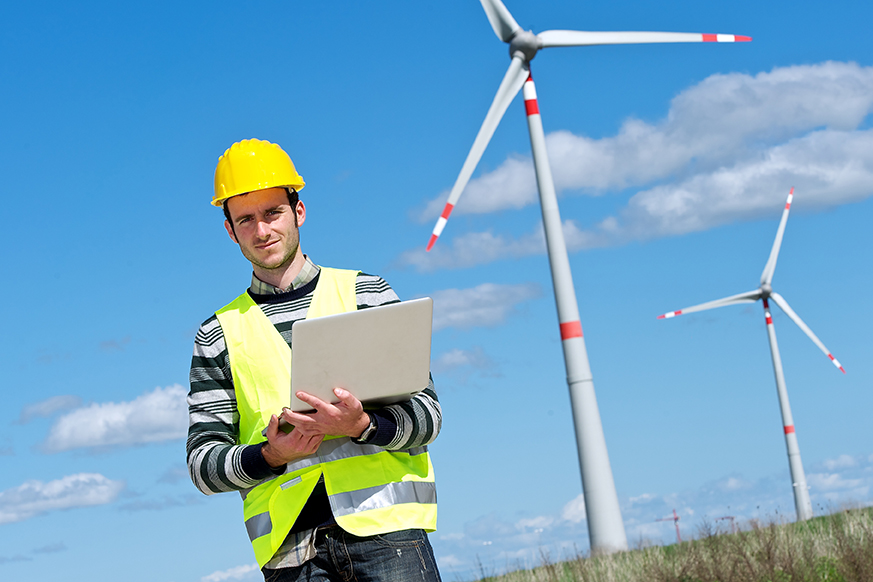
Points to remember
A turbine or farm digital twin is a remote, continuously self-adapting digital model that exploits available data measured on the wind farm and accessible via a network. The twin makes it possible to monitor evolving conditions at the farm, optimize control and production and schedule servicing and maintenance operations.
IFPEN research across the entire value chain
Resource evaluation and exploitation
- Wind analysis using Lidar
- Wake simulation
- Optimization algorithms for wind farm design
Offshore design
- Co-development of the DeeplinesWind™ software
- Floater design
Underwater cable engineering
- Advanced engineering tools
Wind turbine control
- Assisted turbine control via lidar
Wind farm control
- Control strategy based on wake redirection
Exploitation and maintenance
- Real-time swell prediction for offshore operations
- Digital twins to improve turbine and farm monitoring
> To find out more: see our expertise
Strong links with key partners
… from the world of research
IFPEN is a member of several research networks, including the Ancre alliance in France and the IEA-Wind technological cooperation program of the International Energy Agency. It collaborates with numerous national, European and international research bodies. For example, partnerships have been forged with the CNRM (Météo-France) and the French Aerology Laboratory (CNRS) to enhance the Meso-NH multiscale (from a few meters to a few thousands of km) weather modeling code, the LHEEA (Hydrodynamics, Energy and Atmospheric Environment Research Laboratory run by Centrale Nantes engineering school and the CNRS) to study the turbulence caused by a turbine and the Danish DTU (Technical University of Denmark) and American NREL (National Renewable Energy Laboratory) research centers to model offshore turbines and wake forces. Lastly, to foster the emergence of new synergies, IFPEN joined forces with France Energie Eolienne to co-organize the Scientific Day event dedicated to wind energy (first edition in October 2022, the second is scheduled for January 2024).
Focus on :
The French and European wind energy research ecosystem
European wind energy research is supported and driven by governments, top research centers and multiple partnerships between research and industry.
The European Commission finances research dedicated to wind energy technologies and runs its own Joint Research Centre (JRC) to conduct studies on the subject. Several structures reinforce this ecosystem, including the EAWE (European Academy of Wind Energy) as well as a variety of European and world research programs such as EA-Wind and the ECOE-II excellence center dedicated to high-performance computing for energy.
In France, public efforts are driven by ADEME and players have joined forces to form two associations: France Energie Eolienne and France Energies Marines. Lastly, specialized options dedicated to wind energy are offered at engineering schools such as École Centrale de Nantes and Ecole Centrale de Marseille.
… and industry
In order to better meet industrial needs, IFPEN has forged strong ties with leading wind sector players. This is reflected in partnerships with, for example, SBM Offshore on the design of floating supports implemented for the Provence Grand Large project on behalf of EDF Renouvelables, Vaisala on wind prediction tools based on lidar and Principia relating to DeepLines Wind™ software.
Other collaborative agreements are gradually being established with companies of all sizes, drawn to the dynamism of IFPEN’s teams.

The Provence Grand Large project with SBM Offshore on behalf of EDF Renouvelables
In 2023, the Provence Grand Large project has entered its final phase with the end of the construction and commissioning of an experimental farm made up of three floating offshore turbines, with a cumulative power of 25 MW, 17 km off the coast of Port-Saint-Louis-du-Rhône, in the Mediterranean. In 2016, the floater and anchoring technology designed by SBM Offshore and IFPEN was selected by EDF Renouvelables and ADEME. IFPEN conducted the advanced coupled (between the floater and turbine) mechanical engineering studies, and SBM Offshore was responsible for supplying and installing the floaters and anchoring system. The collaboration between SBM Offshore and IFPEN is being continued with the Float4Wind™ project aimed at developing a more compact floater geometry using fewer materials without loss of performance.
A reference since 2015, DeepLines Wind™ software developed with Principia
DeepLines Wind™ simulates the behavior of turbines in their environment with a view to optimizing their dimensioning. In particular, it is adapted to floating turbines, which are exposed to the combined effects of wind and waves. The relative movement between the turbine and its environment is thus the result of an interaction between hydrodynamics (floater support and anchoring system) and aerodynamics (rotor and generator). The resulting combined code is referred to as aero-servo-hydro-elastic and can be used to evaluate the fatigue related to these loads on the turbine. This software, marketed by PRINCIPIA, is a reference and has been taken up by some of the leading energy companies.
A partnership with Vaisala to provide a reconstruction and prediction of the prevailing wind field with a nacelle-mounted lidar
IFPEN developed the WiSE™-Windfield solution to establish a short-term prediction of the properties of interest of the prevailing wind field, from raw data provided by a nacelle-mounted lidar, in order to enable a lidar-assisted turbine controller to optimize its control function. This solution was integrated into Vaisala’s Windbox software, deployed in all marketed “WindCube Nacelle-TC” systems.
In parallel, the WiSE™-Control control strategy was developed to exploit the WiSE™-Windfield outputs, in order to stabilize and maximize a turbine’s production, while minimizing its structural fatigue.
Two entities, complementary expertise
In May 2023, IFPEN Group expanded with the creation of a subsidiary dedicated to wind energy, GreenWits. Dedicated to the transfer of IFPEN’s knowhow, GreenWits offers advanced digital services to the sector’s developers and operators, with four main objectives:
• Optimize wind farm design, particularly in terms of locating turbines in such a way as to limit wake-related energy losses (aerodynamic interactions between turbines),
• Perfect the design of offshore turbine foundations using advanced calculations,
• Monitor the performance and health of wind energy assets,
• Increase the production of wind farms by ensuring minimal operational wake impact.
These four priority areas are at varying degrees of maturity and will continue to benefit from the contributions of IFPEN’s research.
IFPEN and GreenWits teams complement one another. GreenWits, in direct contact with industrial players, can meet their needs using a broad range of software solutions, particularly those developed by IFPEN. If, in order to meet these needs, it proves necessary to develop new functionalities or design new tools, IFPEN and Greenwits work in synergy to overcome the associated technical and scientific challenges, with a view to delivering the optimal solution for the customer. This is the same approach IFPEN uses when working with its other subsidiaries, such as Axens and Beicip-Franlab.
“The creation of GreenWits is a real opportunity to transfer our R&I. Its role is clear: it establishes or facilitates the bridge between our targeted research themes and associated “project” outputs on the one hand, and applications, niches or industrial markets that can benefit, on the other. The path to making our solutions and algorithms a reality, from the roadmap through to the deployed end-product, thus becomes more tangible, for both our own R&I and our “market” contacts. From an operational point of view, this promises a concrete and stimulating partnership between the teams at IFPEN and GreenWits.” Fabrice Guillemin, Wind Turbine Control project manager, IFPEN
Did you know?
IFPEN has a proactive policy of transferring to industry the technologies developed by its researchers, reflected in close partnerships with industrial players and its group subsidiaries. In both emerging and mature mobility, energy and eco-industries markets, IFPEN creates companies or acquires stakeholdings in companies of significant potential, either directly or via capital investment funds.







